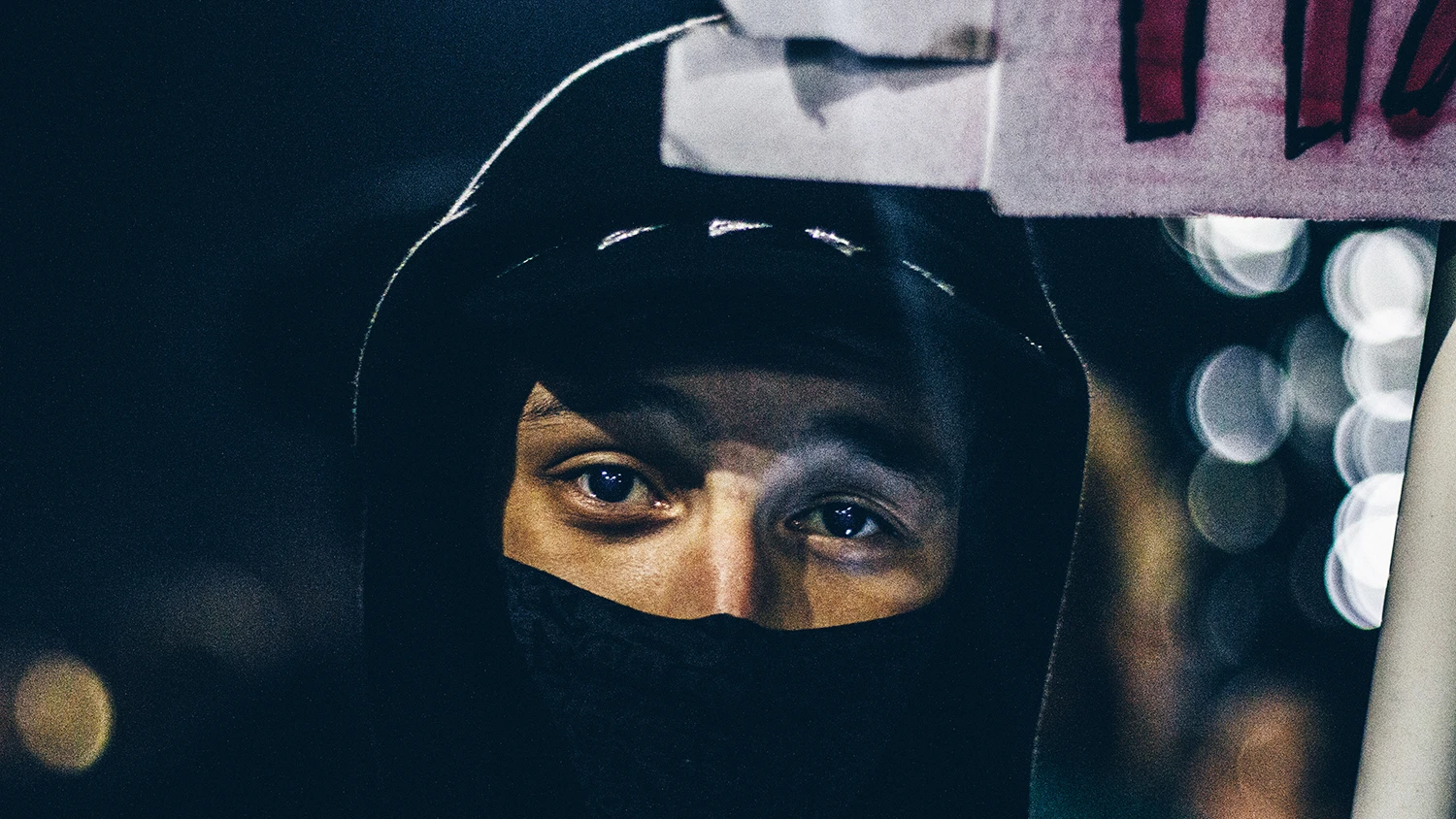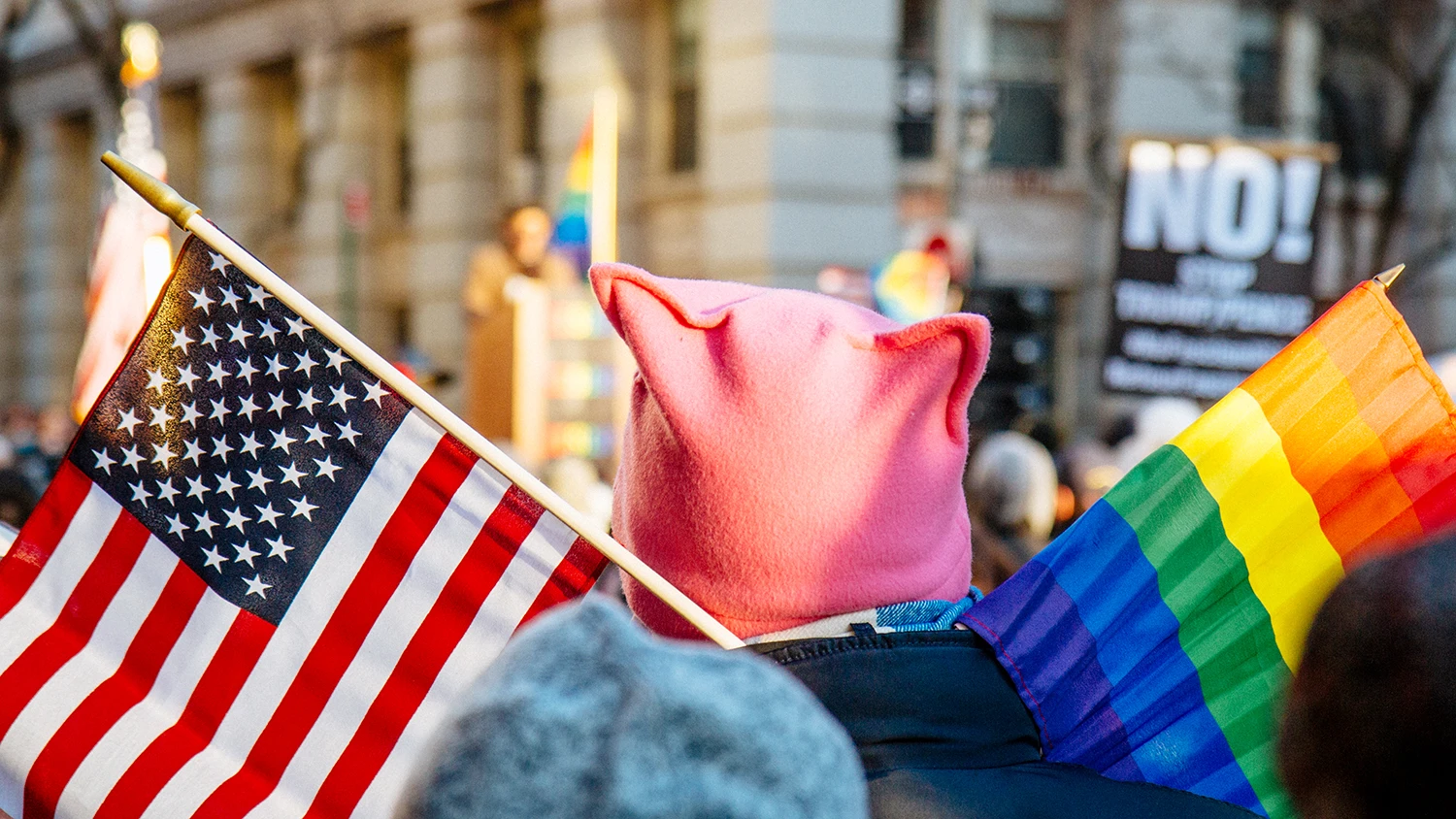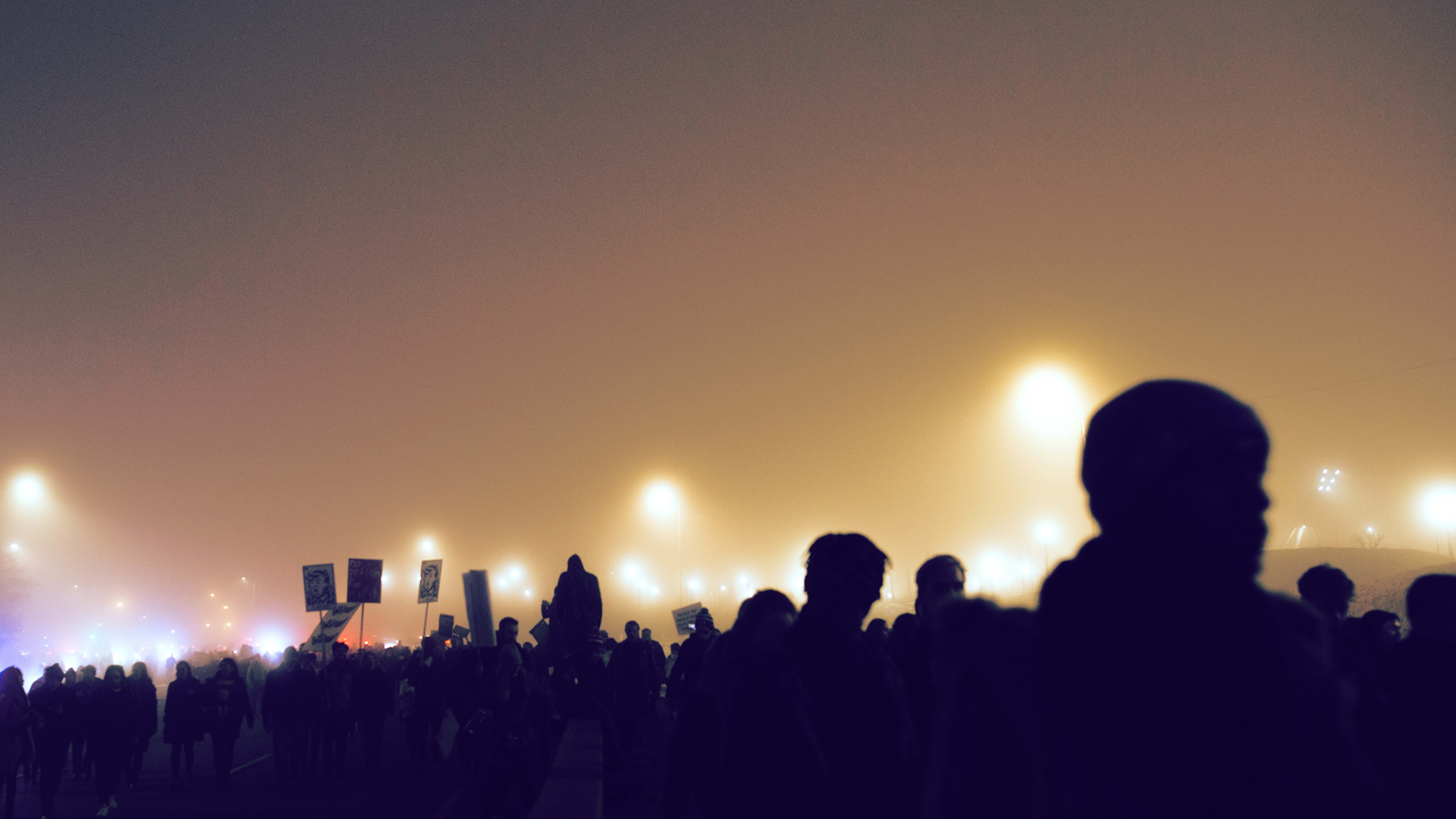As throngs of white nationalist protesters descended upon Charlottesville, they raised Nazi salutes and held tiki torches that were apparently meant to recall torchlit KKK rallies of the past. But the marchers were not clad hoods, robes, or military uniforms. The majority wore khakis and polos or button-downs. Although they were upholding an ideology of racial hatred and violence, their outfits weren’t particularly threatening. They looked like a bunch of golf caddies. Or accountants.
This wasn’t a coincidence. For weeks, groups of neo-Nazis and white supremacists had been plotting the Charlottesville rally on a social media platform called Discord. They spent a significant amount of time trying to decide what to wear, according to Kevin Roose, a New York Times reporter who embedded himself on the platform and listened in on their conversations.
Members brainstormed about what uniform to adopt. Younger ones did not want to wear anything that would call to mind images of the KKK or German Nazis circa World War II. A directive went out saying that those attending the rally shouldn’t wear any head coverings. “Millennial neo-Nazis would say, ‘These boomers with their hoods and their robes are just so cringeworthy,'” Roose explained on a podcast.
Neo-Nazis: Trying To Blend In
Their goal was clear: They didn’t want to look like members of the cultural fringe. They wanted to look clean-cut and mainstream. In the end, most of them settled on a uniform that consisted of white polos and khakis. “There were some guys who looked like they got lost on their way to the insurance convention,” Roose said in the podcast.
The polo shirt look has been associated with white supremacist groups for a long time. They are the uniform of choice of nationalist group called Vanguard America. For decades, Fred Perry golf shirts have been so tied to racist groups that the Southern Poverty Law Center lists the company in its glossary as a “brand of sport shirts often favored by skinheads.” In July, Fred Perry’s CEO had to go on the record explicitly distancing the brand from hate groups. “It is a shame that we have to even answer the question,” Flynn told the Canadian Broadcasting Corporation. “No, we don’t support the ideals or the group that you speak of. It is counter to our beliefs and the people we work with.”
At press time, Lacoste had not responded to requests for comment about white supremacists co-opting shirts that are so closely tied to its brand. Ralph Lauren, which is also known for its polo shirts, sent a statement saying the company, “celebrates diversity, and categorically denounces all forms of hatred, and bigotry.”
Many political movements of the past are identified with particular forms of clothing. German Nazis under Hitler wore starched military uniforms with swastika armbands. Mussolini’s soldiers were known as Blackshirts, because of their black ties, shirts, and hats. The suffragettes expressed their allegiance to the cause by wearing white. More recently, those who opposed Trumps policies took to the streets wearing pink knit “pussy hats.”
After the clashes in Charlottesville between white nationalists and counterprotesters, various activist groups have attracted sudden national attention. The neo-Nazi groups are now more prominent, as are the Antifa, a collective of people who believe it is acceptable to use violence to confront or defend yourself against fascists. Members of these groups have become easier to identify in part because they are choosing to wear distinctive clothing.
“When it comes to political organizing, the question of uniforms is really crucial,” says George Ciccariello-Maher, a professor of politics at Drexel University who studies Antifa. “There’s always a double-edged sword when it comes to clothing: Part of the point is marking yourself as part of a movement, but in doing so, you are also marking yourself off from the rest of the population in an exclusionary way.”
It was only a few weeks before the Charlottesville rally that white nationalists had picked their uniform of choice, but we saw how quickly people began to identify it with neo-Nazis and white supremacists. One obvious example can be seen in a clip by documentary filmmaker C.J. Hunt. In it, a scared young man removes his white polo shirt when he finds himself cornered by a group of counterprotesters. “I’m not really White Power, man,” he said, as he undressed in the street. “I just came here for the fun.”
The white supremacist uniform we saw at Charlottesville was designed to look benign, which is a turn from the white robes and pointed hoods of the Klansmen, garb that was specifically designed to threaten victims. “The white supremacist guys we saw at the rally were trying to tap into a kind of masculine virility that is accessible,” Katherine Lennard, a scholar of KKK clothing at Stanford, tells Fast Company. “They’re also showing that they are connected to business culture, which is about wealth and status.”
Lennard believes that today’s white supremacists are also trying to blend into society and make their violent, racist beliefs–which have largely been considered fringe until now–appear more widespread than they are. “If you’re walking around, there is no way of knowing if all these guys in white polo shirts that are just going to their office job are actually part of the movement,” Lennard says. “They’re saying, ‘Everyone else looks like us.'”

Antifa: Threatening Fascists With Face Masks
In some ways, Antifa has taken the opposite approach. Rather than trying to fit in, those who identified as part of this “anti-fascist” movement stood out with their all-black militant clothing. Unlike neo-Nazi and white supremacist groups, Antifa is not a centrally organized political movement. But given that adherents believe in fighting fascism with physical violence if necessary, it’s not surprising that their outfits can look threatening.
Antifa emerged as a force in the 1920s in response to the wave of fascism spreading through Europe. Every few decades, Antifa activists have come into view when a new fascist threat rises. “When we talk about Antifa returning every so often, that has everything to do with the reemergence of fascism as a political force,” Ciccariello-Maher, the Antifa scholar, explains. “Fascism, as I understand it, attempts to harness the hatred of certain groups to unify people on national grounds. But what they are fighting against is a constantly shifting ideology, from demonizing the Jews to unify the Germans, or white supremacy here in the United States.”
When news of the Charlottesville rally came out, individual Antifa activists put out calls on social media sites, inviting people to resist the fascist gathering. They tapped into other organizations, like Black Lives Matter and anarchists’ groups. “People from a whole range of backgrounds responded to the call,” says Ciccariello-Maher.
The media tended to identify the Charlottesville counterprotesters who were part of Antifa as wearing all black. This is a form of dress known as “black bloc,” a strategy developed by anarchists in 1980s. The idea is to wear black clothing and items to conceal your face, like bandanas or motorcycle helmets, to make it hard to distinguish between people. These face coverings also help protect against mace and other gasses.
Over the last few months, people who have wanted to be associated with Antifa have worn the movement’s logo—a set of red and black flags—that was inspired by the symbol used by German communists in the 1930s who also resisted fascism. It is now easy to buy Antifa-branded gear on websites like Antifa Wear and Etsy.

The Rest Of Us
When it comes to the political unrest currently unfolding in the United States, Antifa and neo-Nazis reflect extreme positions. But the uniforms developed by those on the far right or the far left might still inform what the rest of us wear.
According to the scholars I spoke with, the looks of extreme activists have historically become incorporated into mainstream fashion. It’s unclear how exactly this will play out following recent events. Will those who believe in fighting fascism incorporate more black into their wardrobe, while those who sympathize with white nationalism may wear more khaki?
We’ve seen a similar phenomenon before. In the 1960s, hippies adopted their unique form of dress to reflect their countercultural values. While some wore distinctly hippie outfits from head to toe, others chose to wear some parts of the hippie look because they were drawn to what it stood for (or simply liked the fashion statement).
“What happens in moments of upsurge–like the moment that we are in–is that certain things that were not mainstream become mainstream,” Ciccariello-Maher says. “Antifa, as a semi-fringe way of organizing, is gaining wider acceptance. It doesn’t mean that everybody will embrace black bloc tactics, but (the public) is recognizing the severity of what is going on in the world and is choosing to align with others who share their views.”
Recognize your company's culture of innovation by applying to this year's Best Workplaces for Innovators Awards before the extended deadline, April 12.
